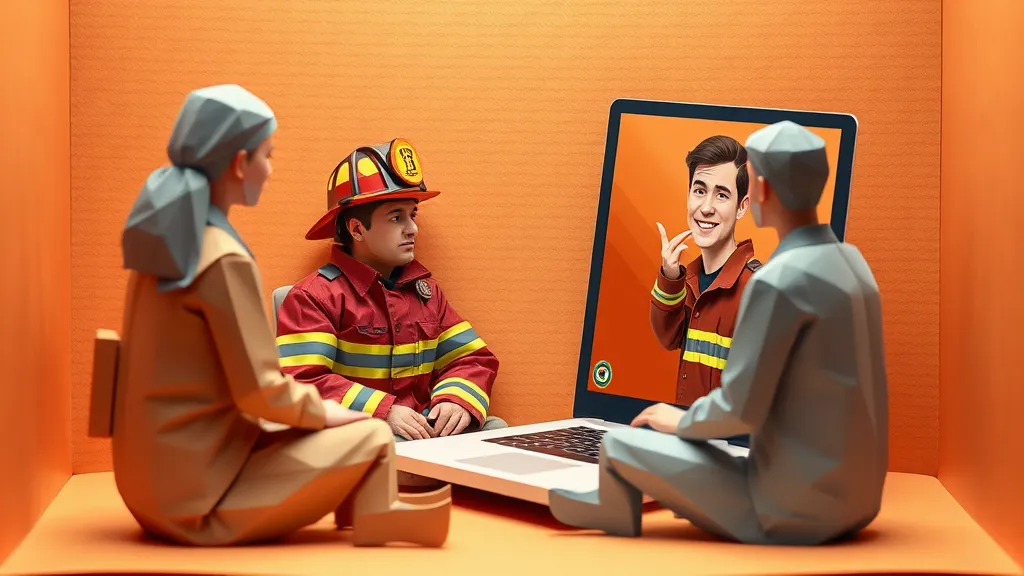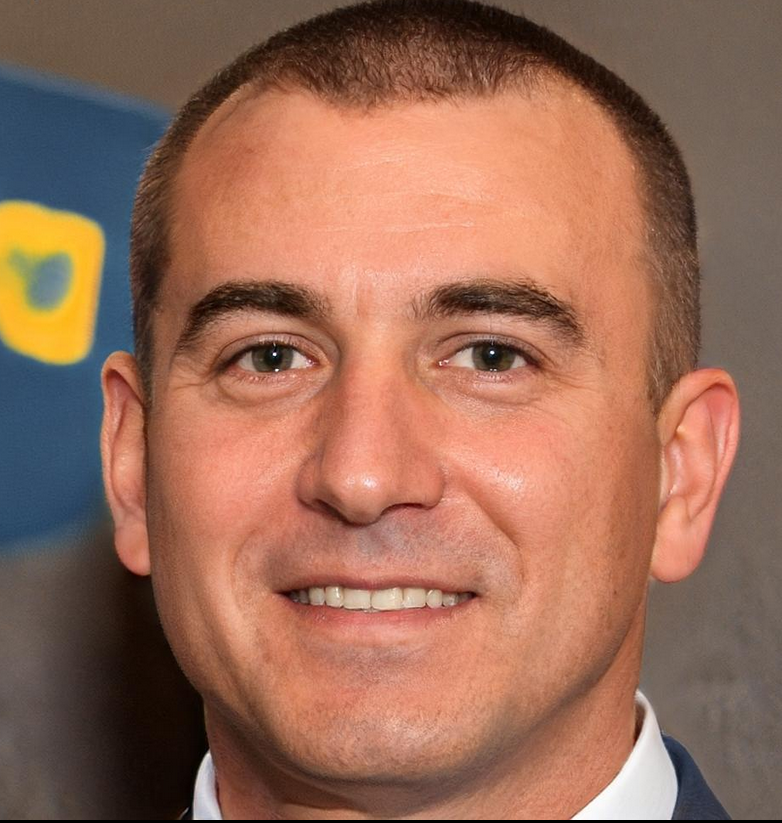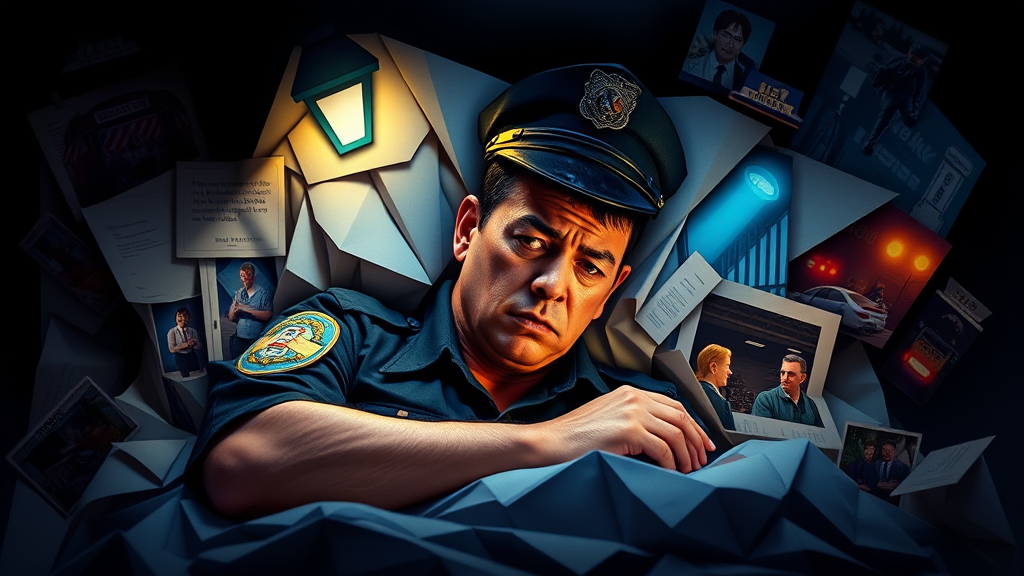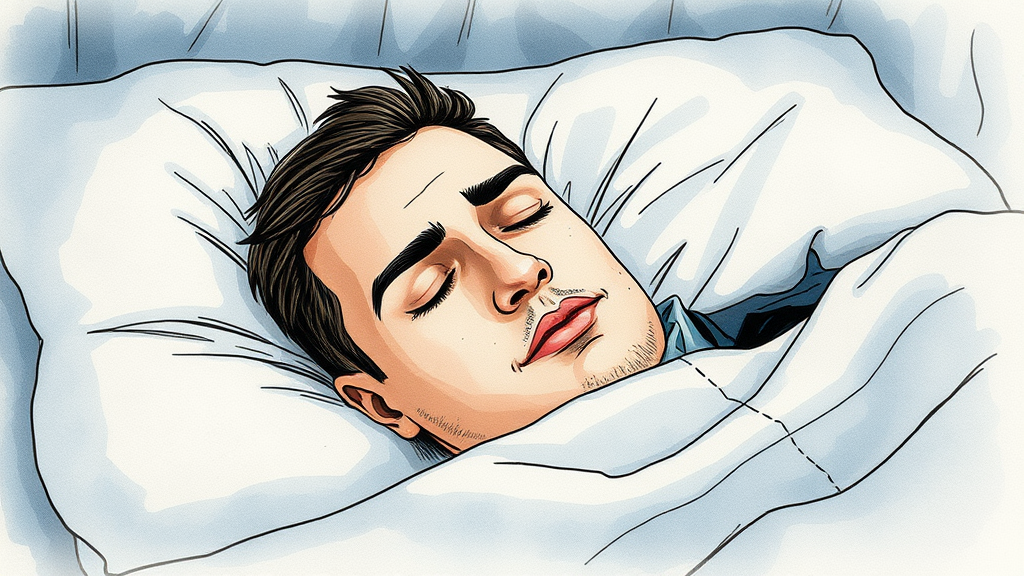· Don Schmidt · Guides · 11 min read
The Ultimate Guide to CBT-I Sleep Therapy for Firefighters: Transforming Sleep Health for First Responders
The definitive CBT-I guide for firefighters. Master proven techniques for insomnia, PTSD, shift work challenges. Transform your sleep, enhance your performance, protect your career.

The Sleep Crisis in Firefighting: Why This Guide Matters
Firefighters face a perfect storm of sleep challenges that would overwhelm most people. Between 24-hour shifts, traumatic calls, and the constant need for split-second decision-making, quality sleep often becomes an impossible dream. Yet sleep isn’t a luxury for firefighters—it’s a critical safety tool that can mean the difference between life and death on the job.
This ultimate guide will transform your understanding of sleep and provide you with the most effective, scientifically-proven tools to reclaim your rest. Cognitive Behavioral Therapy for Insomnia (CBT-I) isn’t just another treatment—it’s your pathway to sustainable, restorative sleep that enhances performance, protects your health, and extends your career.
Understanding CBT-I: The Gold Standard for Sleep Recovery
Cognitive Behavioral Therapy for Insomnia emerged in the late 1980s when sleep researchers made a crucial discovery: chronic insomnia isn’t just a symptom—it’s a learned pattern of thoughts and behaviors that can be unlearned. Unlike medications that mask symptoms, CBT-I addresses the root causes of sleep problems, making it the gold standard treatment recommended by sleep medicine organizations worldwide.
The foundation of CBT-I rests on a simple but powerful principle: your thoughts, emotions, and behaviors are interconnected and directly impact your sleep quality. When you change dysfunctional sleep-related thoughts and behaviors, you naturally improve your sleep. This approach has shown remarkable success rates, with 70-80% of people experiencing significant improvement in their sleep quality.
The Complete CBT-I Toolkit: Your Arsenal for Better Sleep
CBT-I employs multiple evidence-based strategies, each targeting different aspects of sleep dysfunction. Think of it as a comprehensive toolkit where each technique serves a specific purpose in rebuilding your sleep foundation.
Sleep Hygiene Optimization: Building Your Sleep Foundation
Sleep hygiene forms the cornerstone of healthy sleep habits. For firefighters, this means creating consistent routines that work around your unique schedule:
- Environmental Control: Transform your bedroom into a sleep sanctuary. Blackout curtains are essential for daytime sleep after night shifts. Keep temperatures between 65-68°F (18-20°C) and eliminate noise with earplugs or white noise machines.
- Technology Boundaries: Blue light from screens disrupts melatonin production. Implement a “digital sunset” 1-2 hours before intended sleep time. Use blue light blocking glasses if screen use is unavoidable.
- Pre-Sleep Rituals: Develop a 30-60 minute wind-down routine that signals your brain it’s time to sleep. This might include gentle stretching, reading, or progressive muscle relaxation.
Stimulus Control Therapy: Retraining Your Sleep Response
Your bed should trigger only two responses: sleep and intimacy. Stimulus control therapy helps break the association between your bed and wakefulness:
- The 20-Minute Rule: If you can’t fall asleep within 20 minutes, leave your bedroom and engage in a quiet, relaxing activity until sleepiness returns.
- Bed Restriction: Use your bed only for sleep and intimacy. No phones, tablets, work materials, or worry sessions.
- Consistent Sleep Timing: Even with rotating shifts, maintain as much consistency as possible in your sleep schedule during your days off.
Sleep Restriction Therapy: Maximizing Sleep Efficiency
This counterintuitive technique involves temporarily limiting time in bed to match your actual sleep time, creating mild sleep deprivation that promotes deeper, more consolidated sleep:
- Calculate Sleep Efficiency: Track your total sleep time versus time in bed. Initially limit bed time to match actual sleep time.
- Gradual Expansion: As sleep efficiency improves (above 85%), gradually increase time in bed by 15-30 minutes weekly.
- Maintain Sleep Drive: Avoid napping during the restriction phase to build stronger sleep pressure for nighttime.
Cognitive Restructuring: Rewiring Sleep-Related Thoughts
Firefighters often develop catastrophic thinking patterns about sleep that perpetuate insomnia:
Common Dysfunctional Thoughts and Reframes:
- “If I don’t get 8 hours, I’ll be useless on my next shift” → “I’ve functioned well on less sleep before, and one poor night won’t define my performance”
- “I’ll never be able to sleep normally with this job” → “Many firefighters manage good sleep with the right strategies and consistency”
- “My insomnia will ruin my career” → “Sleep problems are treatable, and I’m taking active steps to improve my sleep health”
Advanced Relaxation Techniques: Calming the Hypervigilant Mind
Firefighters maintain heightened alertness that can interfere with the transition to sleep. These techniques help activate your parasympathetic nervous system:
- Progressive Muscle Relaxation: Systematically tense and release muscle groups, starting from your toes and working upward.
- 4-7-8 Breathing: Inhale for 4 counts, hold for 7, exhale for 8. This pattern naturally calms your nervous system.
- Body Scan Meditation: Mentally scan your body from head to toe, releasing tension and promoting relaxation.
- Guided Imagery: Visualize peaceful, safe environments that contrast with the high-stress scenes you encounter at work.
The Firefighter Sleep Challenge: Understanding Your Unique Obstacles
Firefighters face sleep challenges that most CBT-I programs don’t address. Understanding these unique factors is crucial for successful treatment adaptation.
Shift Work Sleep Disorder: Battling Your Biology
Rotating shifts constantly disrupt your circadian rhythm, the internal clock that regulates sleep-wake cycles. This creates:
- Circadian Misalignment: Your body clock becomes confused about when to be alert and when to sleep
- Sleep Debt Accumulation: Irregular schedules make it difficult to maintain consistent sleep duration
- Social and Family Disruption: Your sleep schedule often conflicts with family time and social obligations
Solutions for Shift Workers:
- Use bright light therapy upon waking to reset your circadian clock
- Take melatonin supplements 30 minutes before your intended sleep time (consult your doctor first)
- Create “anchor sleep” periods—try to sleep at the same time for at least 4 hours, even on days off
Trauma-Related Sleep Disruption: When Memories Invade Rest
Exposure to traumatic events creates unique sleep challenges:
- Hypervigilance: Your nervous system remains on high alert, making it difficult to relax
- Nightmares and Night Terrors: Disturbing dreams can create fear around sleep itself
- Fragmented Sleep: Frequent awakenings due to intrusive thoughts or physical tension

The Adrenaline Factor: Coming Down from Crisis Mode
The intense adrenaline surges during emergency calls can take hours to fully subside, making immediate post-shift sleep difficult. Your body needs time to transition from crisis mode to rest mode.
Adapting CBT-I for Firefighter Success: Evidence-Based Modifications
Standard CBT-I protocols require significant adaptation for firefighters. Here’s how leading sleep specialists modify treatment for first responders:
Trauma-Informed CBT-I Approaches
- Safety-First Relaxation: Some relaxation techniques may trigger trauma responses. Start with breathing exercises and gradually introduce other techniques based on comfort level.
- Grounding Techniques: Incorporate grounding exercises that help you feel safe and present before attempting sleep.
- PTSD Screening: Address underlying trauma through concurrent therapy when needed.
Shift Work Adaptations
- Flexible Sleep Scheduling: Instead of rigid sleep times, focus on sleep quality and consistency within shift blocks.
- Strategic Napping: Learn to use tactical naps effectively without disrupting main sleep periods.
- Light and Dark Therapy: Use light exposure strategically to maintain circadian rhythm alignment.
Occupational Stress Management
- Decompression Protocols: Develop structured routines for transitioning from high-stress calls to rest mode.
- Cognitive Defusing: Learn to mentally “leave work at work” through specific cognitive techniques.
- Physical Tension Release: Address the physical aftermath of adrenaline through targeted relaxation.

Proven Outcomes: What Research Shows for Firefighter CBT-I
While research specifically on firefighters and CBT-I is still emerging, available studies show remarkably positive results:
Clinical Trial Results
A landmark study published in Behavior Therapy followed 40 firefighters with chronic insomnia through an 8-week CBT-I program:
- Sleep Onset Improvement: Average time to fall asleep decreased from 45 minutes to 18 minutes
- Sleep Efficiency Gains: Sleep efficiency improved from 67% to 89%
- Quality of Life: Significant improvements in daytime alertness, mood, and job performance
- PTSD Symptom Reduction: 60% of participants showed decreased PTSD symptoms
Long-Term Follow-Up Data
12-month follow-up studies reveal that CBT-I benefits for firefighters are:
- Sustained: Sleep improvements maintained at 1-year follow-up
- Progressive: Many participants continued improving beyond the active treatment period
- Protective: Lower rates of sleep medication dependence and fewer work-related accidents
Comparative Effectiveness
When compared to sleep medications alone, CBT-I for firefighters shows:
- Superior long-term outcomes: Benefits persist after treatment ends
- Fewer side effects: No cognitive impairment or dependency concerns
- Better job performance: Enhanced alertness and decision-making capabilities
- Cost-effectiveness: Lower total healthcare costs over time
Overcoming Implementation Barriers: Making CBT-I Accessible
Despite proven effectiveness, several barriers can prevent firefighters from accessing CBT-I. Understanding and addressing these obstacles is crucial for successful implementation.
Stigma and Cultural Barriers
The Challenge: Fire service culture often equates seeking mental health help with weakness or unfitness for duty.
Solutions:
- Frame CBT-I as performance enhancement, not mental health treatment
- Provide education about sleep’s impact on safety and decision-making
- Use peer champions who can share their success stories
- Normalize sleep health as part of overall fitness and readiness
Access and Availability Issues
The Challenge: Limited availability of CBT-I trained therapists, especially in rural areas.
Solutions:
- Develop telehealth CBT-I programs specifically for firefighters
- Train fire department EAP counselors in CBT-I techniques
- Create group CBT-I programs to serve more firefighters efficiently
- Partner with sleep centers to provide firefighter-specific programs
Schedule and Consistency Challenges
The Challenge: Unpredictable schedules make consistent therapy attendance difficult.
Solutions:
- Offer flexible scheduling options including off-hours appointments
- Develop intensive weekend workshop formats
- Use mobile apps and digital tools for between-session practice
- Create self-guided CBT-I modules that can be completed at any time
Advanced Strategies: Maximizing Your CBT-I Success
Integration with Physical Fitness
Sleep and physical fitness create a synergistic relationship. Optimize both by:
- Timing Exercise: Avoid intense workouts within 4 hours of intended sleep time
- Recovery-Focused Training: Include yoga, stretching, and recovery workouts in your routine
- Sleep as Recovery: Recognize quality sleep as essential for physical performance and injury prevention
Nutrition and Sleep Synergy
Strategic nutrition choices can significantly enhance CBT-I effectiveness:
- Caffeine Management: Limit caffeine to the first half of your waking period
- Alcohol Awareness: While alcohol may help you fall asleep, it significantly disrupts sleep quality
- Sleep-Promoting Foods: Include magnesium-rich foods, tart cherry juice, and complex carbohydrates in evening meals
Technology Integration
Leverage technology to support your CBT-I practice:
- Sleep Tracking: Use devices to monitor sleep patterns and identify improvement trends
- CBT-I Apps: Supplement therapy with evidence-based apps like CBT-I Coach or Sleepio
- Environmental Controls: Use smart thermostats, light therapy devices, and white noise machines
Building Your Personal CBT-I Action Plan
Phase 1: Assessment and Foundation (Weeks 1-2)
- Complete comprehensive sleep diary tracking
- Assess current sleep hygiene practices
- Identify specific firefighter-related sleep challenges
- Establish baseline measurements for improvement tracking
Phase 2: Core Technique Implementation (Weeks 3-6)
- Implement sleep restriction therapy with guidance
- Practice stimulus control techniques consistently
- Begin cognitive restructuring of sleep-related thoughts
- Develop personalized relaxation routine
Phase 3: Integration and Optimization (Weeks 7-10)
- Fine-tune techniques based on individual response
- Address remaining obstacles and challenges
- Develop long-term maintenance strategies
- Plan for challenging situations (major incidents, schedule changes)
Phase 4: Maintenance and Mastery (Ongoing)
- Monthly progress reviews and adjustments
- Continued practice of core techniques
- Integration of advanced strategies as needed
- Peer support and knowledge sharing
The Economics of Sleep: Cost-Benefit Analysis for Firefighters
Direct Cost Savings
Implementing CBT-I creates measurable financial benefits:
- Reduced Sick Days: Better sleep leads to stronger immune function and fewer illness-related absences
- Lower Healthcare Costs: Decreased need for sleep medications and treatment of sleep-related health problems
- Reduced Workers’ Compensation Claims: Fewer fatigue-related injuries and accidents
Performance and Safety Benefits
- Enhanced Decision-Making: Well-rested firefighters make better tactical decisions under pressure
- Improved Reaction Times: Faster response to emergency situations
- Reduced Error Rates: Fewer mistakes in high-stakes environments
- Extended Career Longevity: Better overall health supports longer, more productive careers
Organizational Benefits
Fire departments investing in firefighter sleep health see:
- Improved Morale: Teams function better when members are well-rested
- Reduced Liability: Lower risk of fatigue-related incidents
- Better Public Service: More effective emergency response capabilities
- Recruitment Advantage: Progressive wellness programs attract quality candidates
Emerging Research and Future Directions
Personalized CBT-I Approaches
Researchers are developing algorithms to customize CBT-I based on:
- Individual circadian rhythms
- Specific trauma exposure patterns
- Personal sleep response profiles
- Genetic factors affecting sleep
Integration with PTSD Treatment
New protocols combine CBT-I with trauma-focused therapies for:
- Coordinated treatment of sleep and trauma symptoms
- Enhanced overall treatment effectiveness
- Reduced treatment duration through integrated approaches
Digital Therapeutics
Advanced digital platforms are being developed featuring:
- AI-powered sleep coaching
- Real-time biometric feedback
- Adaptive treatment algorithms
- Virtual reality relaxation environments
Your Next Steps: Implementing CBT-I in Your Life
Finding Qualified Providers
Look for therapists with:
- Board certification in behavioral sleep medicine
- Experience working with first responders
- Training in trauma-informed care
- Flexible scheduling options for shift workers
Self-Implementation Strategies
If professional CBT-I isn’t immediately available:
- Start with evidence-based self-help resources
- Join online CBT-I support communities
- Use validated mobile apps for guidance
- Implement basic techniques while seeking professional support
Building Support Systems
- Connect with other firefighters using CBT-I
- Involve family members in sleep hygiene practices
- Advocate for department-wide sleep health initiatives
- Share your progress to help reduce stigma
Conclusion: Transforming Your Sleep, Transforming Your Career
CBT-I represents more than just a treatment for insomnia—it’s a comprehensive approach to optimizing one of your most critical resources: restorative sleep. For firefighters, quality sleep isn’t just about feeling rested; it’s about maintaining the mental clarity, physical readiness, and emotional resilience required to save lives and protect communities.
The techniques outlined in this guide have helped thousands of firefighters reclaim their sleep and, in doing so, reclaim their health, performance, and career satisfaction. Your commitment to better sleep is an investment in your safety, your effectiveness, and your longevity in the fire service.
Remember, seeking help for sleep problems isn’t a sign of weakness—it’s a sign of professionalism. The best firefighters take care of themselves so they can take care of others. Your journey to better sleep starts with the first technique you implement, the first night you prioritize your rest, and the first time you choose recovery over exhaustion.
If you’re ready to transform your sleep and enhance your career performance, don’t wait for the perfect moment. The tools in this guide are available to you right now. Your future self—and the communities you serve—will thank you for taking this crucial step toward optimal sleep health.
For personalized guidance and connection with qualified sleep therapy professionals who understand the unique challenges of firefighting, contact us today. Your journey to better sleep and enhanced performance begins with a single decision to prioritize your most fundamental need for rest.
Assess Your Sleep Quality Today
Take our My Sleep Health Score assessment to get personalized insights about your sleep patterns and discover how CBT-I can help you achieve better sleep.

Don Schmidt
15+ years of experience in sleep therapy and Cognitive Behavioral Therapy for Insomnia (CBT-I). Passionate about connecting individuals struggling with sleep disorders to evidence-based, non-medical treatment solutions. Author of hundreds of articles and comprehensive guides on sleep health, CBT-I techniques, and overcoming insomnia. When not helping clients achieve better sleep, you can find me hiking with my family and dogs or enjoying a good book.
Ready to connect with a provider?
Allow us to connect you with a provider who can help.



